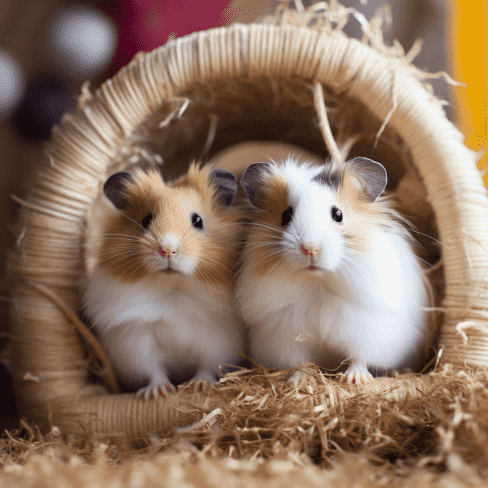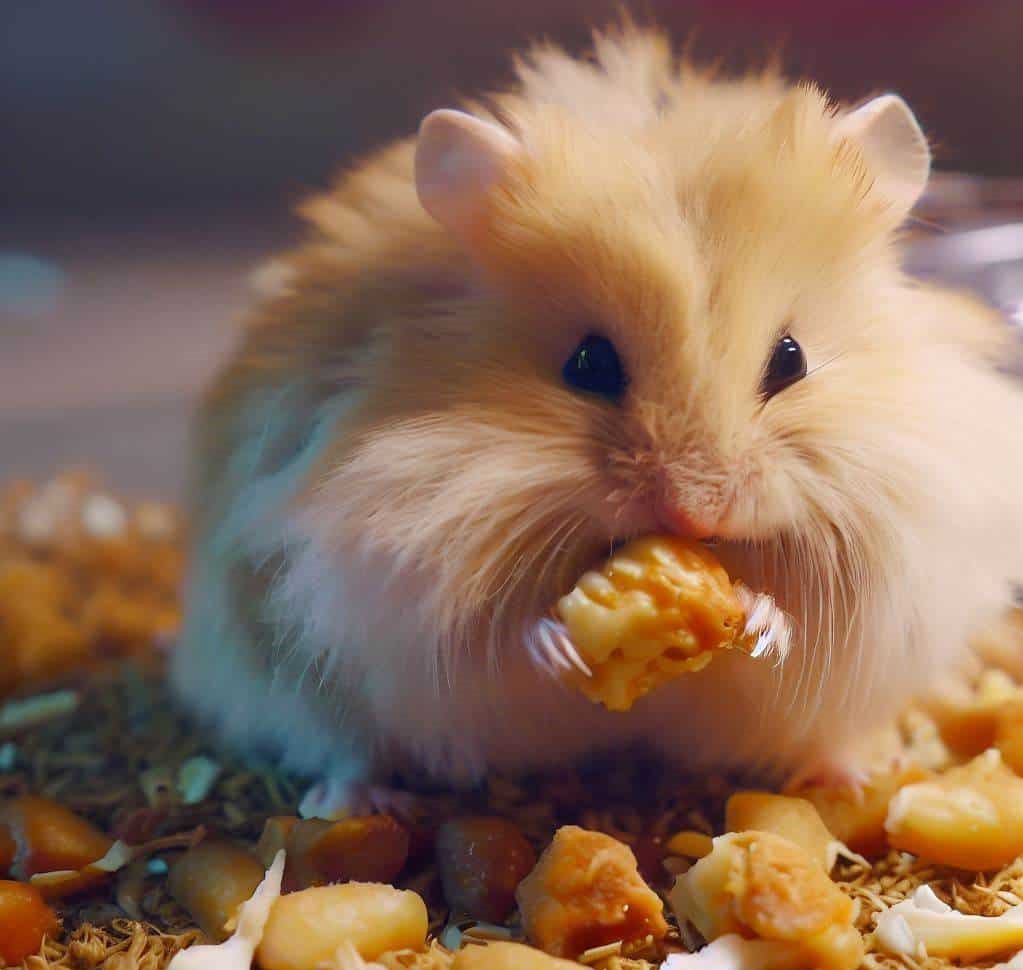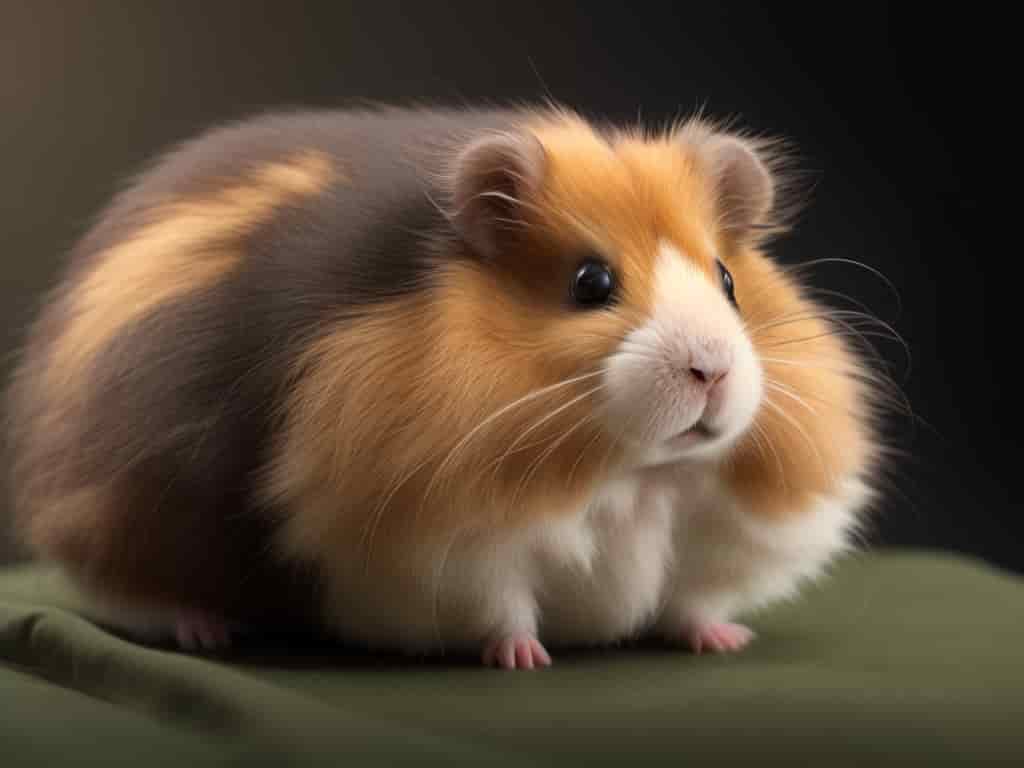Greetings, hamster enthusiasts and new owners!
As an experienced pet caregiver with a penchant for furry friends, I’m excited to share my knowledge on a delightful breed – the long-haired hamster. From the moment you spot their resplendent coats, these hamsters truly are love at first sight!
Having a long-haired hamster isn’t simply about owning a pet; it’s embarking on a unique journey of companionship. These little fluff balls are not just adorable but are also incredibly intriguing.
So, if you’ve ever wondered “How long does a long-haired hamster live?” or “What makes a long-haired Syrian hamster special?”, you’ve landed in the right place.
Buckle up and prepare to delve into the amazing world of long-haired hamsters.
Table of Contents
Physical Characteristics of Long-Haired Hamsters
Like a superstar sporting a glam hairstyle, long-haired hamsters possess a distinguishing feature that sets them apart – their stunning fur. Here’s what you need to know about their physical attributes:
- Size: These hamsters typically range from 4-7 inches in length.
- Fur: Their coat is their crowning glory, ranging from mid-length to extremely long, depending on the breed.
- Color: Their fur comes in various hues, including white, black, golden, and cream.
Keep in mind some breeds have
longer hair than others. For instance, long-haired Syrian hamsters, often called ‘Teddy Bear’ hamsters, have impressively lengthy fur reaching up to 4 inches!
Breeds and Varieties of Long-Haired Hamsters
Just like us humans, long-haired hamsters also come in different shapes, sizes, and colors. Let’s take a look at some of the most popular long-haired hamster breeds.
Syrian Long-haired Hamster
This breed is synonymous with luxurious fur. Sporting a double coat that’s particularly long around their hindquarters, the Syrian long-haired hamster is nothing short of majestic.
Angora Hamster
The Angora hamster is another variation of the Syrian breed. With its long, silky hair, it’s often compared to the illustrious Angora rabbit.
Peruvian Long-haired Hamster
Peruvian Long-haired hamsters are renowned for their lengthy hair that can grow over their eyes, giving them an adorable ‘mop-top’ look.
Satin Long-haired Hamster
The Satin long-haired hamster boasts a beautiful, glossy coat. This shine is due to their individual hair strands being translucent, which catches and reflects light beautifully.
Coronet Long-haired Hamster
Coronet long-haired hamsters have a mane-like appearance around their shoulders, creating a royal aura that lives up to their name.
Texel Long-haired Hamster
Texel long-haired hamsters have curly, whirly coats, which makes them stand out in the crowd of long-haired hamsters.
Sheltie Long-haired Hamster
Sheltie long-haired hamsters sport hair that flows back from the face, creating a ‘wind-blown’ look.
Merino Long-haired Hamster
The Merino long-haired hamster, also known as the curly long-haired hamster, has an undeniably charming wavy coat.
Creating a Suitable Habitat
Setting up a perfect habitat is crucial for the health and happiness of your long-haired hamster. It involves choosing the right cage and maintaining an appropriate temperature and humidity level.
Right Cage for Long-Haired Hamsters

A suitable cage for long-haired hamsters should be spacious, secure, and easy to clean. Multi-level cages with wide, solid platforms are ideal as they provide ample space for movement and prevent the hamsters’ long hair from getting stuck in wire platforms.
Temperature and Humidity Control in the Habitat
Hamsters are sensitive to extreme temperatures and humidity. Ideally, the enclosure’s temperature should be maintained between 65-75°F, with a relative humidity level of 40-60%.
Grooming and Coat Maintenance
Grooming is a quintessential part of the care routine for long-haired Syrian hamsters. It ensures their fur stays in top condition and prevents health issues that might emerge from poor coat maintenance.
Brushing and Combing Long-Haired Hamsters
Consistent brushing and combing is the key to maintaining the luster and health of your hamster’s fur. Aim to gently groom your furry friend at least once a week using a small, soft brush or comb. This keeps their fur neat and helps build a bond between you two.
Trimming and Styling Long-Haired Hamsters’ Coats
Trimming is necessary for hamsters with exceptionally long fur. Use safety scissors to carefully trim the fur around the rear end to maintain cleanliness. Remember, a professional groomer should undertake any drastic changes to their fur length.
Dealing with Tangles and Mats
Long-haired hamsters are prone to hair tangles and mats. Regular grooming can prevent this issue. If you spot a mat, carefully cut it out, not hurting your pet. If the mat is close to the skin, seeking professional help is better.
Nutrition and Diet
Feeding your long-haired hamster a balanced and nutritious diet plays a vital role in ensuring its health and longevity. Notably, diet impacts not only their physical wellness but also the luster and health of their fur.
Special Dietary Considerations for Long-Haired Hamsters

Given their unique coat, long-haired hamsters could benefit from a slightly richer protein diet. This helps maintain their fur quality. Protein sources could include small amounts of cooked chicken, cheese, or hard-boiled eggs.
Providing a Balanced and Nutritious Diet
A well-rounded hamster diet consists of commercial hamster pellets complemented by fresh fruits and vegetables. Keep their meals varied and interesting by rotating different fruits and vegetables. Always serve them in small quantities to prevent overeating, and check the leftovers to gauge your pet’s preferences.
Hydration and Water Requirements
Access to fresh, clean water at all times is a must. A drip water bottle is ideal as it keeps the water clean and prevents the long-hair hamster’s long fur from getting wet. Remember to refill the water daily and ensure the drinking nozzle is functioning correctly to allow easy access to water.
Health Care and Common Issues
Health care for long-haired hamsters goes beyond just a balanced diet and proper grooming. It involves regular vet visits and understanding signs of potential health problems to catch them early.
Regular Veterinary Check-ups
Scheduling regular veterinary check-ups is a proactive step in your long-haired Syrian hamster’s health care routine. These visits can help spot potential health issues early, and your vet can provide valuable advice on diet and grooming tailored to your pet’s needs.
Signs of Illness and Common Health Problems
Several signs might indicate your long-haired hamster isn’t feeling well:
Loss of Appetite
If your long-hair hamster eats less or not, this could signal a health issue. A visit to the vet is recommended to determine the cause and appropriate treatment.
Changes in Activity Level
A hamster that’s unusually lethargic or less active may be unwell. Watch for changes in behavior and consult your vet if anything seems off.
Eye Problems
Eye redness, swelling, or discharge can signal infections or injuries. Immediate veterinary attention is necessary to prevent further complications.
Skin Problems
Changes in fur condition, skin redness, or excessive scratching might indicate skin problems, possibly due to parasites or allergies.
Digestive Issues
Abnormal droppings, constipation, or diarrhea are signs of digestive problems which require immediate veterinary intervention.
Preventive Measures for Maintaining Good Health
Taking preventative steps can go a long way in ensuring the good health of your long-haired Syrian hamster. Here are some guidelines:
- Balanced diet: Feed your hamster a mix of commercial pellets and fresh produce. Consider occasional protein additions for their fur health.
- Hydration: Ensure constant access to clean water to prevent dehydration.
- Regular grooming: Brushing and combing your hamster’s fur prevents mats and tangles. Occasional trimming, especially around the rear, helps maintain cleanliness.
- Exercise: Provide ample opportunities for physical activity. An exercise wheel and interactive toys are excellent choices.
- Vet visits: Regular veterinary check-ups help detect potential health issues early.
Proper Handling Techniques for Long-Haired Hamsters
Proper handling is crucial for your long-haired hamster’s safety and the maintenance of their unique coat. These techniques should guide you in handling your fluffy friend:
- Slow and Steady: Approach your hamster slowly and calmly to avoid startling them. Hamsters have poor eyesight, so sudden movements can be scary.
- Scoop, Don’t Grab: Scoop up your hamster from underneath using both hands. Never grab from the top, which can mimic predator behavior.
- Support the Hindquarters: Always ensure the hindquarters are supported. This is particularly crucial for long-haired hamsters whose fur might get tangled or pulled.
- Avoid the Fur: Try to handle your long-haired hamster by its body, not the fur. This prevents tugging on their hair, which can cause discomfort or damage their coat.
- Frequent, Short Sessions: Regular handling helps your hamster get used to your touch. However, keep sessions short to prevent stress.
- No High Heights: Always handle your hamster close to the floor or over a soft surface to prevent injury if they wriggle free.
Remember, each long-haired Syrian hamster has a unique personality. Patience, gentleness, and consistency are keys to successful handling.
Conclusion
Long-haired hamsters are delightful pets, each with their unique charm. Their luxurious fur is undoubtedly their standout feature, but remember, these bundles of joy require a dedicated level of care and attention.
As I wrap up this guide, I hope you’ve found answers to your queries about long-haired hamsters and are now better equipped to provide a nurturing environment for these lovely creatures.
FAQs
How often should I groom my long-haired hamster?
Long-haired hamsters should be groomed at least once a week to keep their fur in top condition.
What is the lifespan of a long-haired Syrian hamster?
Long-haired Syrian hamsters, particularly Syrian hamsters, typically live for 2 to 3 years, though they can live up to 3-4 years with proper care.
What type of diet is best for a long-haired hamster?
A balanced diet for a long-haired hamster includes commercial hamster pellets, fresh fruits, vegetables, and small amounts of protein like cooked chicken, cheese, or hard-boiled eggs to help maintain their fur quality.
Alina Hartley is a small-town girl with a ginormous love of bearded dragons. It all started with Winchester, a baby bearded who was abandoned at the shelter by his former owners because of a birth defect that caused one front leg to be shorter than the other. Alina originally went to the shelter looking for a guinea pig, but one look at Winchester and it was love at first sight. From that day on, Alina has dedicated her life to learning everything she can about bearded dragons. She loves helping new beardie parents start their incredible journey with these magnificent reptiles.
Follow her on:
LINKEDIN
TWITTER.
Read her latest articles HERE
Learn more about her HERE.

